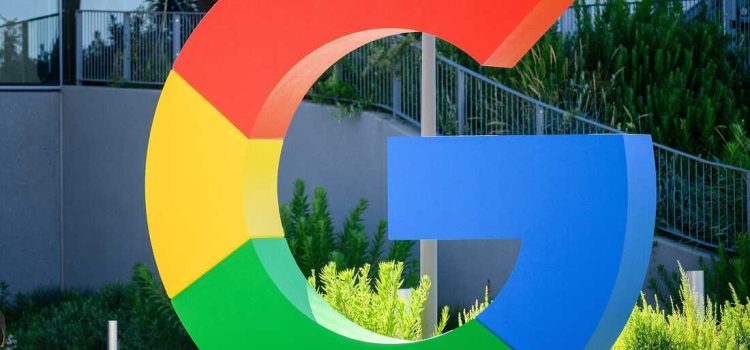
Why News Publishers Are Worried About Google’s AI Search Tool
Introduction
Hello, I’m Fred Wilson, a seasoned blog writer with a passion for technology and journalism. I have been following the latest developments in the field of artificial intelligence and how it affects the media industry. In this article, I will share with you some insights on Google’s AI search tool, a new feature that uses advanced machine learning models to generate search summaries, headlines, and articles based on user queries. I will also explain why this tool raises concerns among publishers about losing web traffic, ad revenue, and editorial control, and what are the possible solutions to address these challenges and opportunities.
What is Google’s AI Search Tool and How Does it Work?
Google’s AI search tool is a new feature that was launched in late 2023 as part of Google’s efforts to improve its search engine and provide users with more relevant and personalized information. This tool uses advanced machine learning models, such as natural language generation and natural language understanding, to analyze user queries and generate search summaries, headlines, and articles based on the most relevant sources available on the web. The tool is designed to help journalists with their work by offering them options for headlines, writing styles, and content creation. It also aims to provide users with more diverse and comprehensive perspectives on various topics, as well as to reduce the spread of misinformation and fake news.

Why Are News Publishers Worried About Google’s AI Search Tool?
While Google’s AI search tool may seem like a useful and innovative feature for users and journalists, it also poses significant threats and challenges for news publishers. Here are some of the main reasons why publishers are worried about Google’s AI search tool:
- Loss of web traffic and ad revenue: News publishers rely on web traffic and ad revenue to sustain their businesses and pay their staff. However, Google’s AI search tool may reduce the need for users to visit the original sources of the articles, as they can get the information they need from the search summaries, headlines, and articles generated by the tool. This may result in a loss of web traffic and ad revenue for publishers, as well as a loss of brand recognition and loyalty.
- Loss of editorial control and quality: News publishers have their own editorial standards and guidelines, as well as their own voice and style, that distinguish them from other sources and appeal to their audiences. However, Google’s AI search tool may not respect or reflect these standards and guidelines, as it may generate inaccurate, biased, or misleading information based on the sources it selects and the models it uses. This may result in a loss of editorial control and quality for publishers, as well as a loss of credibility and trust among their readers.
- Loss of content ownership and compensation: News publishers invest a lot of time, money, and effort to produce original and high-quality content that attracts and engages their audiences. However, Google’s AI search tool may use their content without proper attribution or compensation, as it has done in the past with snippets on its own website. This may result in a loss of content ownership and compensation for publishers, as well as a loss of intellectual property rights and fair competition.

What Are the Possible Solutions to Address the Challenges and Opportunities of Google’s AI Search Tool?
While Google’s AI search tool presents many challenges and threats for news publishers, it also offers some opportunities and benefits. Here are some of the possible solutions to address the challenges and opportunities of Google’s AI search tool:
- Collaboration and regulation: News publishers can collaborate with Google and other stakeholders, such as governments, regulators, and industry associations, to establish clear and fair rules and standards for the use of Google’s AI search tool and similar technologies. These rules and standards should ensure that publishers are properly credited and compensated for their content, that their editorial control and quality are respected and maintained, and that their web traffic and ad revenue are protected and enhanced.
- Innovation and adaptation: News publishers can innovate and adapt to the changing media landscape and user behavior, by leveraging Google’s AI search tool and similar technologies to improve their own products and services. For example, publishers can use the tool to generate ideas, headlines, and summaries for their own articles, to optimize their content for search engines and social media platforms, and to provide their readers with more personalized and interactive experiences. Publishers can also use the tool to monitor and analyze the performance and impact of their content, to identify and address gaps and opportunities, and to learn from best practices and feedback.
- Education and engagement: News publishers can educate and engage their audiences, by informing them about the benefits and risks of Google’s AI search tool and similar technologies, and by encouraging them to visit the original sources of the articles and to verify the information they receive. Publishers can also use the tool to provide their readers with more diverse and comprehensive perspectives on various topics, to stimulate critical thinking and dialogue, and to foster a culture of trust and transparency.
Summary Table
| Challenges | Opportunities | Solutions |
|---|---|---|
| Loss of web traffic and ad revenue | Improved products and services | Collaboration and regulation |
| Loss of editorial control and quality | More diverse and comprehensive perspectives | Innovation and adaptation |
| Loss of content ownership and compensation | More personalized and interactive experiences | Education and engagement |
Conclusion
Google’s AI search tool is a new feature that uses advanced machine learning models to generate search summaries, headlines, and articles based on user queries. The tool is designed to help journalists with their work and to provide users with more relevant and personalized information. However, the tool also raises concerns among news publishers about losing web traffic, ad revenue, editorial control, content ownership, and compensation. To address these challenges and opportunities, news publishers can collaborate and regulate, innovate and adapt, and educate and engage. By doing so, they can ensure that they remain competitive and relevant in the digital age, and that they continue to provide their audiences with high-quality and trustworthy content.










